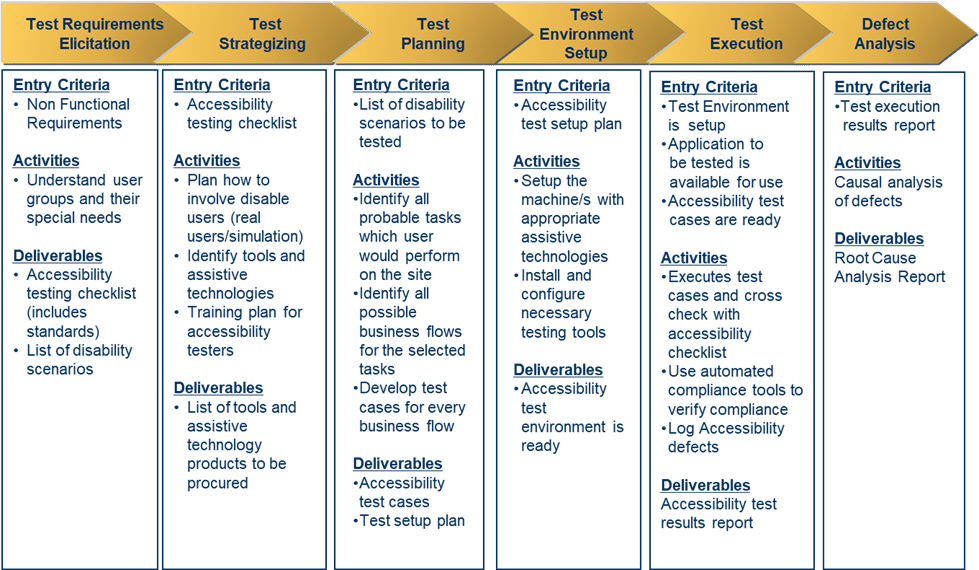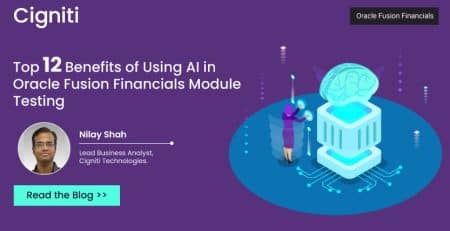AI Unleashed: Revolutionizing Accessibility Testing for the Future
Is Accessibility even an “Issue”?
As per the Internet World Stats information report, there are 2.4 billion Internet users worldwide. Per the United Nations factsheet on persons with disabilities, around 10 percent of the world’s population has some form of disability, which means more than 27 percent of potential users could have special needs when it comes to accessing the Internet.
Accessibility issues can be categorized under four categories:
- Visual Impairment – Total or partial blindness, color blindness
- Motor skill Impairment – Impairment that makes it difficult or impossible to use a mouse or pointing device
- Hearing Impairment – Requiring sign language accompaniment or subtitling on video/multimedia content
- Cognitive Impairment – Impairment which makes it difficult to process information
Why is it essential to address “Accessibility” in the first place?
- Target Audience: As discussed above, more than 650 million people (more than 27 percent of the population) have some form of disability.
- Accessibility legislation: Accessibility requirements for websites are mandated by government policies and legislation. Many countries have created specific legislation to address accessibility requirements.
- Potential lawsuits: In the past, noncompliance with accessibility legislation has led to several lawsuits and millions of dollars in settlements, and despite having several Accessibility tools in the markets, the number of lawsuits has constantly increased year-on-year.
What is the traditional way to address/comply with Accessibility standards, and how can AI help in this regard?
The below diagram depicts the Accessibility Testing Methodology:

AI can be applied across all of the above Accessibility phases to achieve higher “Performance,” “Time to Market,” and “Quality.” Let’s look into each of these parameters in the context of AI and Accessibility:
Performance
Though the primary purpose of accessibility testing is to serve differently-abled users, we can have AI to have these benefits for the overall user base.
For example, one application we were testing was quite heavy on images, so in the accessibility test summary report, the AI tool suggestion was that all heavy images be replaced with alternative texts. This achieved accessibility compliance, but because a large number of the heavy images were removed, the application’s overall performance was also faster. The pages that had taken around two seconds to load with images started loading in less than a second.
So even though performance improvement was never an integral part of the original requirements, by addressing the accessibility concerns with AI recommendations, we could improve the application’s performance and benefit the entire user base.
Time to Market
In one of our earlier accessibility assignments, we used the Dragon NaturallySpeaking voice recognition tool for ADA II compliance testing. The tool is for users who struggle with writing due to a learning disability like dyslexia, where spelling and typing can be frustrating and challenging. AI-driven Voice recognition software can streamline workflow, allowing the user to work as fast as they can speak instead of as quickly as they can type and move the mouse.
The unseen benefit here is speed or time to market. Using a good voice recognition tool is typically three times faster than typing, allowing you to do hands-free computing.
Quality
Captioned AI software contains text that transcribes the narration and provides descriptions of the present sounds and music. This is used by people with hearing difficulties. Still, it also benefits people who aren’t native speakers of the language used in the video or those unfamiliar with the vocabulary of a discipline, and it also allows interactive searches within the video.
AI Captioning tool improves the quality of your software by ensuring that the right message is sent to the extended user base—your intended users plus the users who are native to the application language.
Benefits of AI in Accessibility Testing
Here are some of the benefits of AI in Accessibility Testing.
- Improved Performance: AI helps determine the scenarios that can be tackled to get better performance and improved accessibility.
- Faster Time to Market: AI-driven Accessibility testing allows reduced testing cycle and faster time to market.
- Reduction in Cost: AI drives for lesser automation needs coupled with manual testers – thereby reducing the overall cost.
- Increased Quality: With AI – QA can focus on strategic pain areas effectively, thereby increasing the overall Quality.
- Increased Diversity in the Workplace: Using AI to improve digital reachability promotes inclusivity and diversity.
Conclusion
Using AI in Accessibility has multifold benefits. Apart from fixing the Accessibility issues, this will also help enhance the quality of life for disabled individuals. Incorporating AI in the Accessibility Approach helps in covering all the all-important aspects of Accessibility: Visual (AI Powered Screen Reader), Hearing (Closed Captioning), and Mobility (AI Powered Assistive Tools).
For a transformative journey in enhancing digital accessibility, delve into Cigniti’s expertise in AI and Accessibility Testing. Whether it’s addressing the needs of differently-abled users, ensuring compliance with accessibility standards, or harnessing AI’s power for improved performance, time to market, and quality, we’re here to guide you.
Contact us for tailored solutions that not only meet accessibility requirements but also elevate the overall user experience and inclusivity of your digital presence.





Leave a Reply